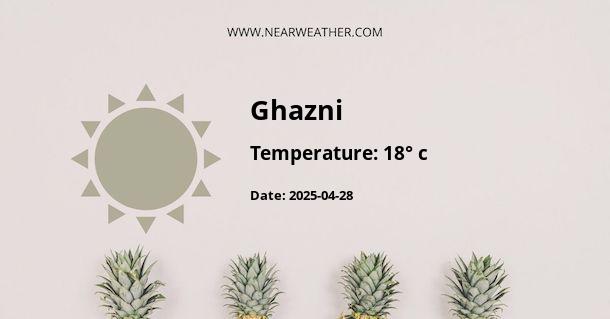Ghazni, Afghanistan: Climate and Weather Year Round
Ghazni is a city located in central Afghanistan, known for its rich history and cultural heritage. Understanding the climate and weather patterns of Ghazni is essential for anyone planning to visit or live in this region. In this article, we will explore the climate of Ghazni throughout the year, including temperature, precipitation, and other relevant weather information.
Geographical Location
Ghazni is situated in the eastern part of the Hazarajat region, approximately 150 kilometers southwest of Kabul, the capital city of Afghanistan. It lies at an elevation of 2,219 meters (7,280 feet) above sea level, surrounded by mountains and valleys.
Climate Classification
Ghazni experiences a continental climate, characterized by hot summers and cold winters. The city falls under the Köppen climate classification of BSk, which indicates a dry semi-arid climate.
Seasonal Temperatures
The temperatures in Ghazni vary significantly throughout the year. Summers are generally hot, while winters can be extremely cold. Here is a breakdown of average temperatures by season:
| Season | Average Temperature (°C) |
|---|---|
| Spring (March to May) | 10°C to 24°C |
| Summer (June to August) | 25°C to 37°C |
| Autumn (September to November) | 12°C to 24°C |
| Winter (December to February) | -3°C to 7°C |
During the summer months, temperatures can occasionally reach above 40°C (104°F), making it quite hot. In contrast, winters are cold, with temperatures often dropping below freezing point.
Precipitation
Ghazni receives most of its annual precipitation during the winter and spring months, while summers and autumns are relatively dry. The average annual precipitation in Ghazni is around 400 millimeters (15.7 inches).
Here is a breakdown of the average monthly precipitation in Ghazni:
| Month | Average Precipitation (mm) |
|---|---|
| January | 26 mm |
| February | 28 mm |
| March | 38 mm |
| April | 45 mm |
| May | 35 mm |
| June | 7 mm |
| July | 0 mm |
| August | 0 mm |
| September | 2 mm |
| October | 8 mm |
| November | 13 mm |
| December | 13 mm |
As observed from the data above, January and February are the driest months, while April and March receive the most precipitation.
Snowfall
Ghazni experiences occasional snowfall during the winter months, particularly in December and January. The snowfall can vary from light dustings to heavier snowstorms, which can sometimes disrupt daily activities and transportation in the city.
Wind Patterns
Ghazni is known for its strong and dusty winds, especially during the spring season. These winds, known as "Sarazma," can reach speeds of up to 80 kilometers per hour (50 mph), creating dusty and sandy conditions in the city.
Best Time to Visit
The best time to visit Ghazni is during the spring and autumn seasons when the temperatures are mild and pleasant. Spring brings blooming flowers and green landscapes, while autumn offers beautiful foliage colors. However, it is essential to check the current weather conditions and be prepared for occasional dust storms during the spring season.
In conclusion, Ghazni experiences a continental climate with hot summers and cold winters. The city receives most of its annual precipitation during the winter and spring months. Visitors should plan their trips accordingly, taking into account the temperature and precipitation patterns throughout the year.
A - Ghazni's Latitude is 33.553558 & Longitude is 68.426888.
A - Weather in Ghazni is 18° today.
A - Climate Conditions in Ghazni shows clear sky today.
A - Humidity in Ghazni is 21% today.
A - Wind speed in Ghazni is 6.84 km/h, flowing at 358° wind direction. today.
